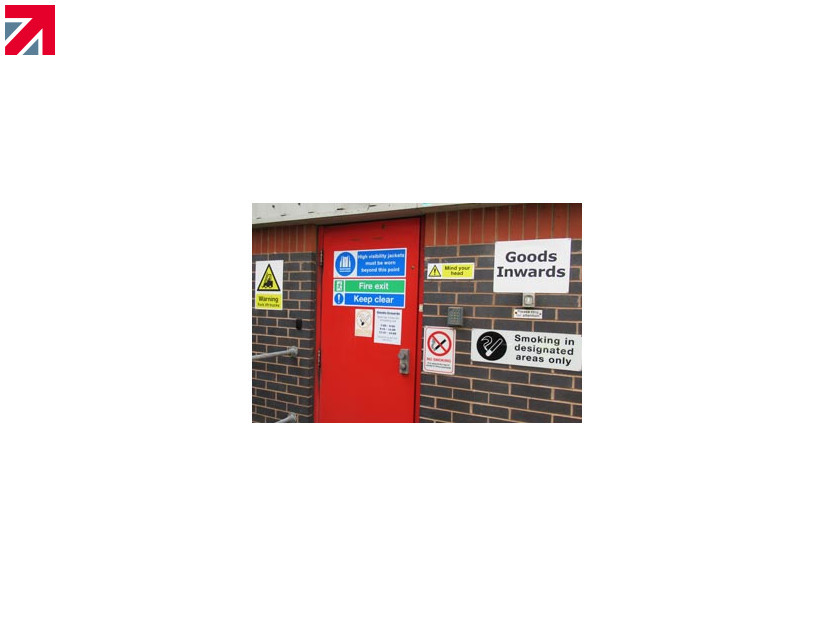Signage is absolutely crucial when it comes to reducing the risk of accidents and injuries. However, even clear safety signage can lose its effectiveness through ‘sign blindness. Here we explore the issue – and how best to avoid it.
What is sign blindness?
Safety signs are designed to be easily understood. They use striking colours, clear symbols, and minimal text to communicate a message that should be understood immediately. However, certain factors can interrupt this process, and this is known as sign blindness. There are a number of different ways in which this can occur.
Cluster Blindness
This is when a large number of signs all located in one place overload the individual with information. Every second, an average person experiences approximately 40 million sensory inputs. Out of these, the conscious brain is only able to process 0.02%[1]. Consequently, where there is too much signage, important messages can be ignored.
Therefore, signs should be well-spaced out and not contain too much information. Rather, they should be clear and succinct, and messaging should be prioritised.
[1] https://www.leveragesafety.com/post/safety-sign-blindness
Over-familiarity
https://www.leveragesafety.com/post/safety-sign-blindness
A safety sign is designed to shock people into or out of action. If people are continuously exposed to the same signs, they can, unfortunately, begin to have less impact. A good example of this is the ‘Fire Door Keep Shut’ sign, which despite its message – may not deter people from wedging the door open on a hot day or if they feel they are going to be entering and leaving frequently.
Unfortunately, there’s not a great deal that can be done about over-familiarity. Rather, facilities managers and site managers should reinforce the message of the sign verbally wherever possible. By doing so, the effectiveness of the sign will be refreshed.
Failing to remove temporary signage
Similarly, temporary signage can easily be ignored if not implemented properly. For example, if a ‘Cleaning in Progress’ sign is up, but there is no longer any cleaning in progress, the impact of the sign is likely to be lost in the future. When the real danger appears, the warning is not heeded because the signage has previously been used carelessly.
As such, it is crucial that temporary signs are taken down promptly after a potential hazard has been removed.
Summary
By being aware of the different ways sign blindness can occur, site managers and facilities managers can take simple steps to minimise the likelihood of its occurrence and improve onsite safety.
Here is our checklist of simple methods that can be implemented to avoid sign blindness:
Don’t use more signs than necessary.
Ensure that signage is well spaced out, succinct, clear, and visually appealing.
Reiterate important sign messages verbally.
Be sure to take down temporary signs immediately after the hazard is gone.
Use standardised signs.
At Stocksigns, we have delivered a wide variety of bespoke and standardised signage products since 1955 and played an instrumental role in developing the original BS 5499 legislation that has since been incorporated into ISO 7010. A specialist signage supplier, our product portfolio covers a range of applications – from highways to building sites to offices.
Find out more about our products here: https://www.stocksigns.co.uk/stocksigns-shop/
Find out more about Stocksigns Limited on their member profile page here
Member-created content 3 years ago | From members
